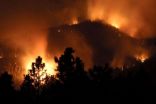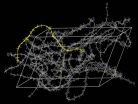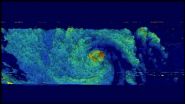(Press-News.org) A new study led by the University of California, Berkeley and involving the University of Colorado Boulder indicates the current response to wildfires around the world—aggressively fighting them—is not making society less vulnerable to such events.
The study suggests the key is to treat fires like other natural hazards—including earthquakes, severe storms and flooding—by learning to coexist, adapt and identify vulnerabilities. The new study indicates government-sponsored firefighting and land management policies may actually encourage development on inherently hazardous landscapes, leading to an amplification of human losses to wildfire.
"We don't try to 'fight' earthquakes—we anticipate them in the way we plan communities, build buildings and prepare for emergencies. We don't think that way about fire, but our review indicates that we should," said lead author Max Moritz of UC Berkeley's College of Natural Resources. "Human losses will only be mitigated when land-use planning takes fire hazards into account in the same manner as other natural hazards, like floods, hurricanes and earthquakes."
A paper on the subject appears in the Nov. 6 issue of Nature.
"We are in dire need of a more sustainable coexistence with wildfire," said Research Scientist Tania Schoennagel of CU-Boulder's Institute of Arctic and Alpine Research, a study co-author. "Unless we plan for fire as an inevitable and natural process, it will continue to have serious social and ecological consequences."
The study looked at research findings from three continents: North America, Australia and Europe. The scientists studied different kinds of natural fires, what drives them in various ecosystems, differing public responses and the critical wildland-urban interface. Additionally, the scientists analyzed fire data from the western U.S., the Mediterranean Basin and all of Australia.
"We have mostly approached wildfire management from the ecological side through fuel reduction," Schoennagel said. "While this can be effective, it can only achieve so much. To more successfully coexist with wildfire we also need preventative tools, like residential land-use planning, zoning guidelines, fire-resistant building codes and fuel management on and around homes, for example."
Although a September 2014 study involving Schoennagel found the perception that Colorado's Front Range fires are becoming increasingly severe does not hold much water scientifically, the rapid expansion of the wildland-urban interface is helping to wreak unprecedented havoc on Colorado homes in the line of fire, she said.
The 2010 Fourmile Canyon Fire in Boulder County, for example, which burned 167 homes over 6,181 acres, topped the 2002 Hayman Fire—the largest Colorado wildfire on record at the time—which burned 133 homes over 138,144 acres in four counties. The 2012 High Park Fire in Larimer County then topped the Fourmile Canyon Fire by burning 259 homes over 87,284 acres. Keeping with the trend, the 2012 Waldo Canyon Fire in El Paso County burned 346 homes over 18,297 acres. It was followed by the 2013 Black Forest Fire near Colorado Springs, which burned 486 homes over 14,280 acres, and holds "the record for now," said Schoennagel.
"We have learned that forest thinning is rarely effective under extreme burning conditions, and the severity of fire in adjacent forests has little to do with whether a home burns," said Schoennagel, who also is affiliated with CU-Boulder's geography department. "Solely relying on public forest management to prevent homes burning by wildfire is simply barking up the wrong tree. We need more integrated solutions that cross the public-private land boundary to help us coexist with inevitable wildfire."
In addition to updated land-use and zoning regulations, the researchers recommend updating building codes, implementing vegetation management strategies and evaluating evacuation and warning systems. The team also recommends developing household and community plans for surviving "stay-and-defend" fire situations and developing better maps of fire hazards, ecosystems and climate change effects.
In the western U.S., there has been a 60 percent expansion in the wildland-urban interface since 1970, primarily in forests that have a history of moderate- to high-severity fires. Only 16 percent of the wildland-urban interface in the western U.S. currently is developed (20 percent in Colorado) but those numbers are rising, according to the nonprofit research group Headwaters Economics, which is based in Bozeman, Montana.
Conducting carefully planned, prescribed burns can help manage the severity of wildfires in some ecosystems, said the study authors. Both prescribed burns and natural wildfires can stimulate vegetation regeneration, promote vegetation diversity, provide habitat for wildlife and sustain other natural ecosystem activities like nutrient cycling.
According to the authors, climate change will inevitably complicate management strategies. In Colorado, for example, where temperatures have climbed 2 degrees Fahrenheit since 1977, a substantial increase in Front Range wildfire activity is expected, said Schoennagel.
In addition to UC Berkeley and CU-Boulder, the Nature study included authors from the U.S. Forest Service, the University of California-Santa Barbara, the Conservation Biology Institute in Corvallis, Oregon, and four research institutes in Australia.
"A different view of wildfire is urgently needed," said Moritz. "We must accept wildfire as a crucial and inevitable natural process on many landscapes. There is no alternative. The path we are on will lead to a deepening of our fire-related problems worldwide, which will only become worse as the climate changes."
INFORMATION:
Australian researchers have shown why calcium-binding drugs commonly used to treat people with osteoporosis, or with late-stage cancers that have spread to bone, may also benefit patients with tumours outside the skeleton, including breast cancer.
Several clinical trials – where women with breast cancer were given these drugs (bisphosphonates) alongside normal treatment for early-stage disease – showed that they can confer a 'survival advantage' and inhibit cancer spread in some women, although until now no-one has understood why.
A new study by Professor ...
Researchers from the University of Cambridge have identified a class of low-cost, easily-processed semiconducting polymers which, despite their seemingly disorganised internal structure, can transport electrons as efficiently as expensive crystalline inorganic semiconductors.
In this new polymer, about 70% of the electrons are free to travel, whereas in conventional polymers that number can be less than 50%. The materials approach intrinsic disorder-free limits, which would enable faster, more efficient flexible electronics and displays. The results are published today ...
CHICAGO (November 5, 2014) – When wildfire and people intersect, it is often in the wildland-urban interface, or WUI, a geography where homes, roads and trails intermix with fire-prone vegetation. In an article published Thursday in the journal Nature, U.S. Forest Service scientist Sarah McCaffrey and her colleagues advocate for an approach to wildfire management that reflects ecological science as well as research on the human dimensions of wildfire and fire management.
"Learning to Coexist with Wildfire," a research review led by the University of California-Berkley, ...
PHILADELPHIA –A diagnosis of septic shock was once a near death sentence. At best, survivors suffered a substantially reduced quality of life.
Penn Medicine researchers have now shown that while most patients now survive a hospital stay for septic shock, 23 percent will return to the hospital within 30 days, many with another life-threatening condition -- a rate substantially higher than the normal readmission rate at a large academic medical center. The findings are published in the new issue of Critical Care Medicine.
"Half of patients diagnosed with sepsis ...
November 5, 2014 – Insomnia is a "prevalent and persistent" problem for patients in the early phases of recovery from the disease of addiction—and may lead to an increased risk of relapse, according to a report in the November/December Journal of Addiction Medicine, the official journal of the American Society of Addiction Medicine. The journal is published by Lippincott Williams & Wilkins, a part of Wolters Kluwer Health.
"Treating sleep disturbance in early recovery may have considerable impact on maintenance of sobriety and quality of life," according ...
Despite great advances in understanding how the human brain works, psychiatric conditions, neurodegenerative disorders, and brain injuries are on the rise. Progress in the development of new diagnostic and treatment approaches appears to have stalled. In a special issue of the Cell Press journal Neuron, experts look at the challenges associated with "translational neuroscience," or efforts to bring advances in the lab to the patients who need them.
"A variety of global impact studies have identified brain disorders as a leading contributor to disabilities and morbidity ...
DENVER – A risk stratification model based on lymph node characteristics confirms with a high level of confidence the true lack of lung cancer in lymph nodes adequately sampled with endobronchial ultrasound-guided transbronchial needle aspiration and classified as negative.
Lung cancer treatment and prognosis is critically dependent on accurate staging that takes into account the extent to which cancer has spread from the primary lung tumor to other locations. Examination of lymph nodes containing lung cancer cells that have spread can be done by surgical removal, ...
Stanford University School of Medicine scientists have found a new way to forecast which patients with age-related macular degeneration are likely to suffer from the most debilitating form of the disease.
The new method predicts, on a personalized basis, which patients' AMD would, if untreated, probably make them blind, and roughly when this would occur. Simply by crunching imaging data that is already commonly collected in eye doctors' offices, ophthalmologists could make smarter decisions about when to schedule an individual patient's next office visit in order to optimize ...
Hurricane Vance was a hurricane on Nov. 4 when the Tropical Rainfall Measuring Mission or TRMM satellite and the Global Precipitation Measurement (GPM) mission satellite passed overhead and measured its rainfall from space. TRMM and GPM revealed areas of heavy rain within the storm before it weakened to a depression and made landfall on Nov. 5.
The TRMM satellite flew over hurricane Vance on Nov. 4 at 0953 UTC (4:53 a.m. EST). Rainfall derived from TRMM's Microwave Imager (TMI) data collected were overlaid on a 1000 UTC (5 a.m. EST) image from NOAA's GOES-West satellite ...
Typhoon Nuri continued moving in a northeasterly direction passing the island of Iwo To, Japan when NASA's Aqua satellite passed overhead.
The Moderate Resolution Imaging Spectroradiometer or MODIS instrument that flies aboard NASA's Aqua satellite captured a visible picture of Typhoon Nuri on Nov. 5 at 4:10 UTC (11:10 p.m. EST, Nov. 4).
At 1002 UTC (5:02 a.m. EST) a microwave image captured from NASA/JAXA's Tropical Rainfall Measuring Mission or TRMM satellite showed that the low-level center of circulation was beginning to weaken. The strongest thunderstorms had become ...




